Mint leaves are not supposed to be black. If you’re seeing this, you know that something has gone very wrong.
If you see mint leaves turning black or black spots on your mint leaves, it can be a sign that it’s past the point of return for that plant. But, there are some ways you can save your mint plant or at least part of it.
What Causes Mint Leaves to Turn Black?
The mint leaves turn black when the plant is under stress from watering issues, disease, pests, or extreme temperature changes. Mint is an easy plant to grow, but it doesn’t come without a few issues to watch out for.
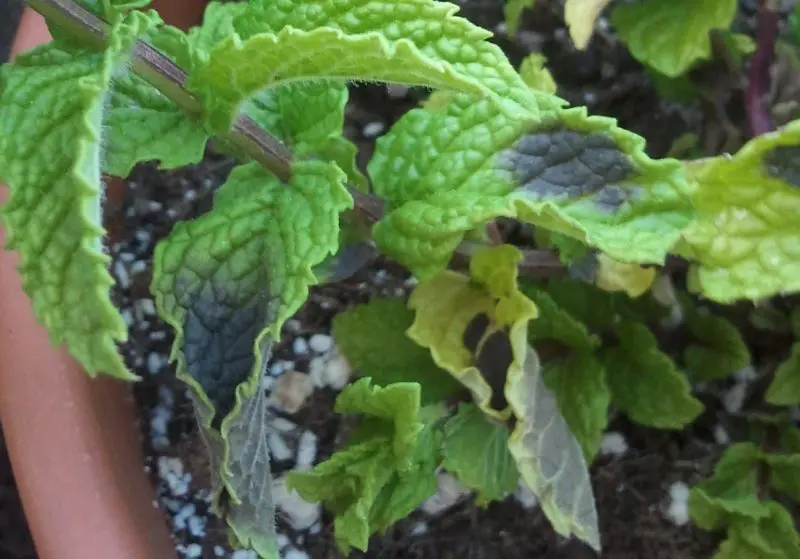
Overwatering & Drainage Problems
Watering mint plants is something that can be hard for us gardeners to get right. Between the amount of water to give, the frequency of watering, and proper drainage, it can be a challenge to get the hang of it.
This is why overwatering is one of the most common issues with mint plants and other herbs. And the problem is even more pronounced if you’re growing mint in containers or pots indoors.
Overwatering can lead to root rot, black or brown leaves, and stems that are too weak to hold up the plant.
A general rule of thumb for watering your plants is to have moist soil, but not wet soil. Check the soil with your finger about an inch below the surface. If it’s dry, water your plant. If it’s wet, wait until the next morning and check it again.
Make sure you have enough drainage holes to allow the excess water to drain out of the container. Otherwise, your mint roots will sit in water and get weak or start to rot. You can kill your mint plant this way.
Underwatering Your Mint Plant
Underwatering is the other common problem with mint. If you have a history of having a black thumb, you probably think you’re overwatering your plants, try NOT to do that, and end up underwatering them.
If you don’t water your mint plant enough, they can wilt, turn yellow, and eventually turn brown or black. Excessively dry soil is not good for your mint plants’ survival.
Watering is a delicate balance, so make sure to check the soil regularly and water it when the top inch is dry.
If you missed a few days of water, remember that mint is pretty resilient so go ahead and water as you normally would. Don’t try to overdo it and make up for the last few days. You don’t want to drown the plant and have it sitting in the excess water, as you’ll end up with an overwatering problem 🙂
Too Much Fertilizer
Scientists found that too much fertilizer impacts the soil by creating a concentration of salt that is far too high and can harm beneficial microorganisms in the soil.
Adding too much fertilizer can lead the mint plant to grow too fast, even before the root system and stem are able to support the growth. This leads to a weak infrastructure that cannot supply enough water and nutrients for the plant to survive. This can also reduce the number of mint leaves and/or lead to unsustainable growth.
Rootbound Mint Plants
When a plant is rootbound, the roots don’t have enough room and so they start growing in circles and end up constricting the others’ ability to get nutrients and water. The root ball just needs more room to grow, and no longer has enough space to do so.
While the mint leaves will start turning yellow and then brown, if the problem is really bad it can get to the point where they turn black.
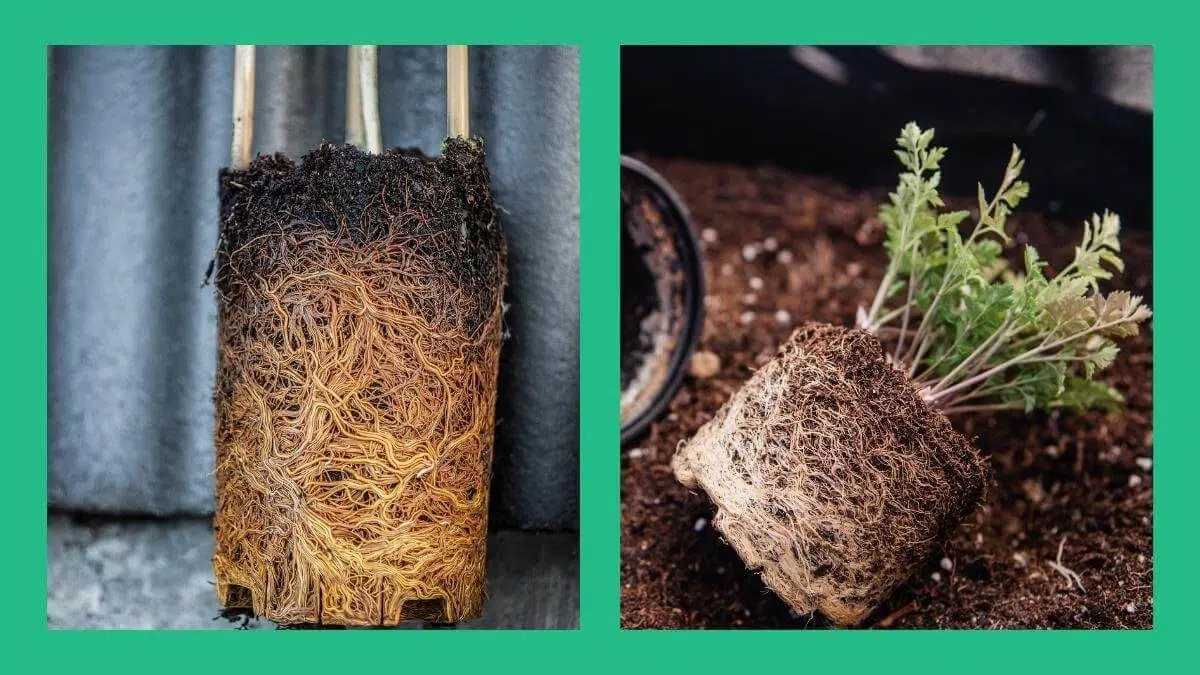
This is an issue you’ve probably seen before if you’ve purchased plants from a big box store or nursery. That’s not saying they did a bad job of keeping the plant, but it is to say that you should always check to make sure the roots aren’t out of room – 9 times out of 10 you’ll want to replant any plant it into a larger pot.
You can also check the drainage holes, as roots will usually start finding their way out of the pot through them. If you see roots sticking out of there, they’re trying to escape and find more room, so you should repot the plant.
How to Fix It
Buy a larger pot and some high-quality, well-draining soil or potting mix. Gently remove the plant from its original container and massage the roots to help them see that they now have more space. You just want to break up any really tough parts by gently squeezing them.
Place the plant into the new pot, and add potting soil to fill it up enough to cover the roots completely. Your plant will start to recover over the next few days, and the issue should start clearing up.
Sun & Temperature Issues
If your plant was exposed to very cold temperatures or a lot of wind, it could get damaged that way.
Mint grows best between 55 and 80 degrees Fahrenheit. It is also hardy and can withstand temperatures down to -20 degrees F. However, if it’s been in the heat for a while and then all of the sudden is exposed to a below-freezing few days, that shock for the plant can turn the mint leaves black.
Mint Sunscald (i.e. Mint Sunburn)
Mint does best with quite a bit of sun and partial shade. When it’s directly exposed to the sun for most of the day, the mint leaves can go through a bit of shock and change colors – especially if they aren’t watered extra on very hot days or days where there isn’t a cloud in the sky. If the plant is dry and exposed to too much sun, it can get sunscald.
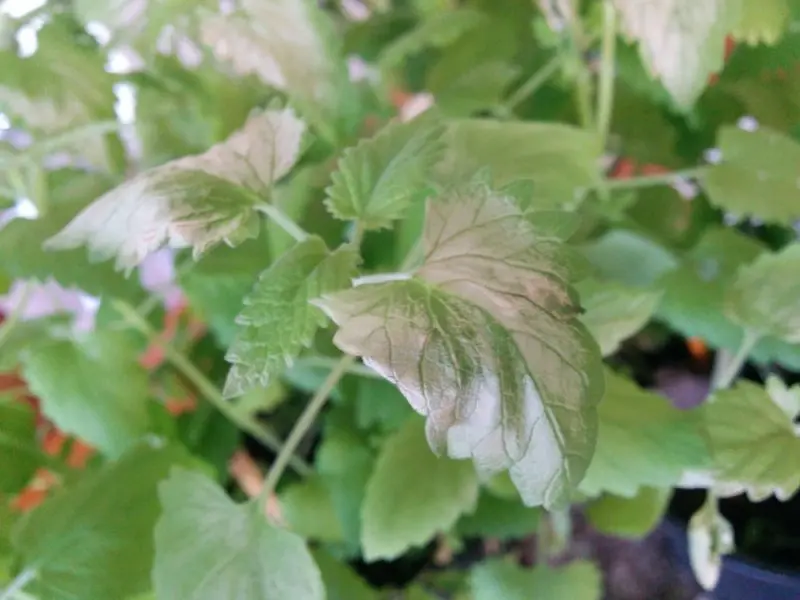
This issue also appears if you don’t transplant your seedlings properly before bringing them outside. When you start your seeds indoors, you need to “harden them off” before bringing them outside full-time.
Hardening off is the process of exposing them to a little bit of the full sun and outside elements at a time. Usually around an hour for the first day, and slowly increasing that each day until they’re able to be outside for a full 8 hours.
If you don’t properly harden off the plants (i.e. get them used to being outside) before you put them directly into the heat and sun, they can get sunscald and have odd-colored leaves.
Not Enough Light
On the other hand, if you grow a mint plant in full shade, it’s going to have some issues as well. Plants need some direct sunlight to grow healthy and produce a good yield for you.
Make sure your plant will get at least partial sun in the location you want to plant it. If not, I’d choose another spot and make sure to watch that spot every few hours to see how much sun it will get.
Fungal Diseases
There are quite a few fungal diseases that can impact the mint plant and cause mint leaves to turn black.
Mint Rust
Mint rust is a common fungal disease that will start as yellow or bright orange spots on a mint plant, which then change to brown and even black as the issue gets worse.
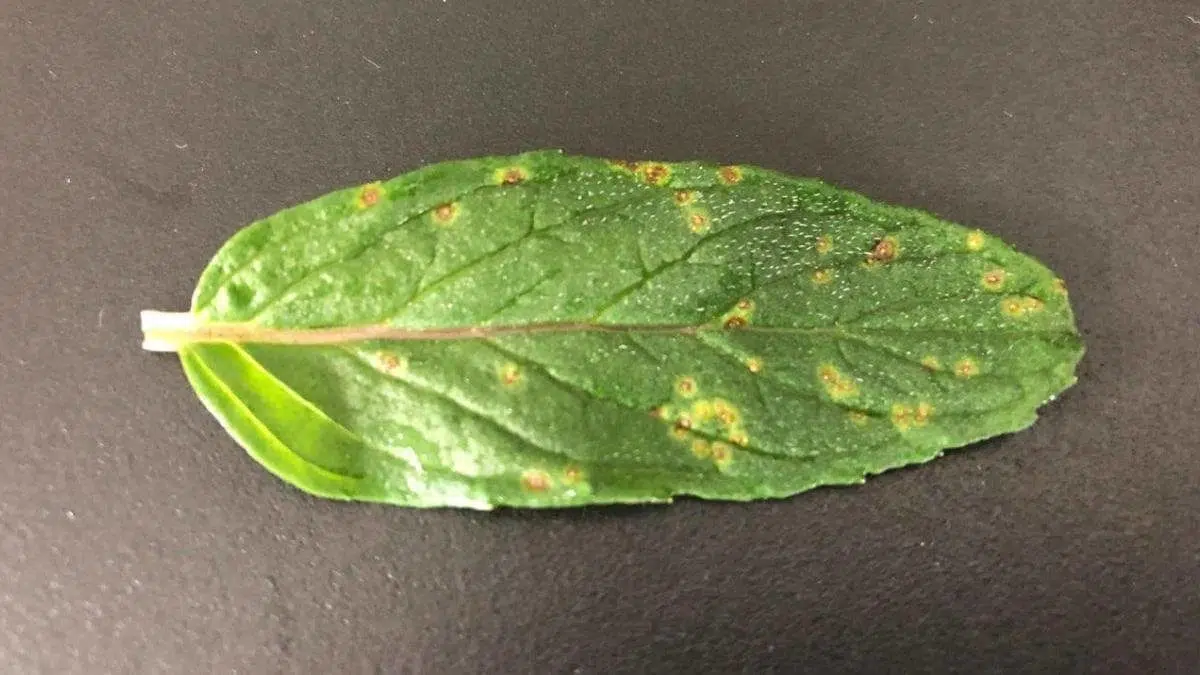
How to Fix It
Unfortunately, the only way to really fix mint rust is to destroy infected mint plants and start again. Do NOT put these in your compost pile either, as the fungal disease can survive and transmit to future plants you grow with that compost.
Since you can’t really come back from mint rust, prevention is the key here. Instead of watering your plants from overhead, water them at the base of the soil near the mint stem to avoid getting the mint leaves wet. When the leaves are wet and don’t dry for a while, you’re essentially inviting the fungus in which can lead to rust down the line.
So remember, preventing mint rust looks like this:
- Water the soil, not the leaves
- Give them plant enough space for proper air circulation
- Don’t overwater your plant
Verticillium Wilt
Verticillium wilt is a doozy. This one can survive in the soil and plant leaves/roots/stems, leading to problems for future plants you plant in the same areas.
Infected mint leaves will turn yellow/brown, and eventually, die off and turn black.
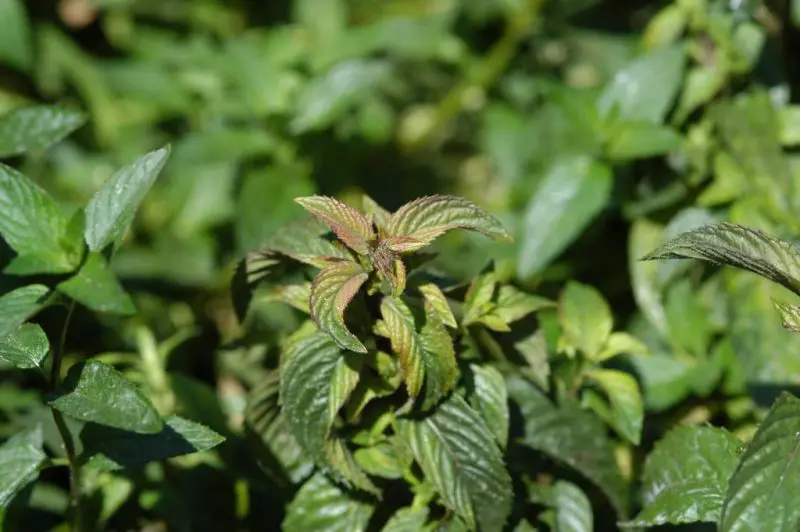
This won’t kill the plant entirely at first, but it can eventually spread to other areas of the plant and cause total plant death.
Mint Anthracnose
Also called leopard spot disease or sphaceloma menthae, mint anthracnose is spread by the air and rain. It appears as dark brown or black spots on the leaves of the mint plant.
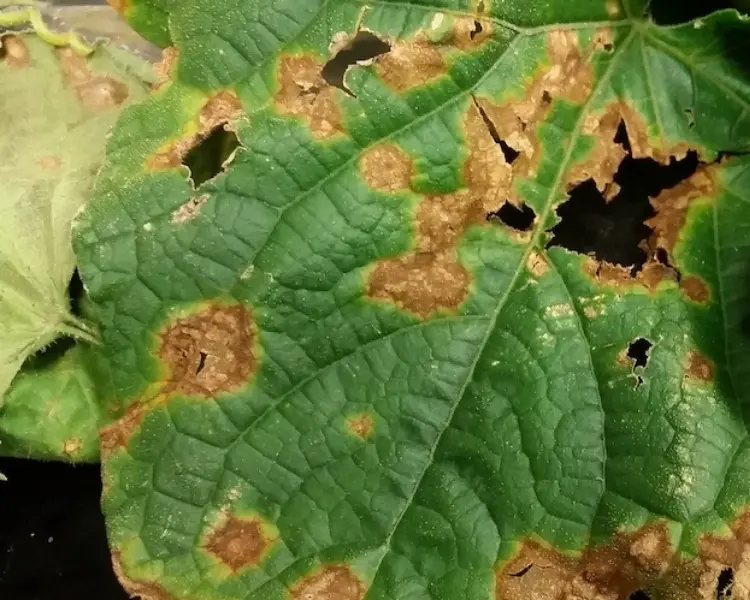
It thrives when conditions are moist and warm, and just like other fungal diseases, it is spread through watering issues.
Leaf Blight
Blight is a type of disease that can come in many different varieties and impacts many types of plants.
Leaf blight affects mint plants that are already in a weakened state, either from pest damage or mint rust. Leaf blight takes hold quickly and can cause infected mint leaves to turn black and fall off.
How to Fix it
Similar to mint rust, you’ll want to remove the infected plant immediately to avoid spreading it to others, as there is not a “cure” for this disease. Again, make sure to throw out infected plants and don’t add them to your compost bin as they can spread this issue to future plants.
Septoria Leaf Spot
Septoria leaf spot is a fungal disease that appears as actual spots on the mint leaves that can be 1/8 inch in size between leaf veins. A fungus called Septoria lycopersici is the cause of leaf spot.
Wind can carry these spores onto your herb from nearby plants and weeds it may have overwintered on. It can also be spread by insects or water splashing onto its leaves from the soil.
How to Fix It
Removed damaged leaves from the plant, and make sure to sterilize your pruning sears and hands afterward. Do not leave the leaves underneath the plant and do NOT compost them, you want to put them in the trash.
A copper fungicide is a good option for helping get rid of any leaf spot you may have missed, as well as help prevent it from moving forward.
How to Avoid Fungal Diseases
There are a few ways you can avoid fungal diseases from wreaking havoc on your mint plants.
- Water the base of the plants, not from overhead – watering from overhead can cause a whole host of fungal issues if your mint leaves don’t dry before nighttime sets in.
- Mulch, mulch, mulch – and when you think you have enough mulch, get more. This helps prevent soil from splashing up onto your plant and spreading nasty diseases. Mulching also helps keep weeds at bay and helps regulate the temperature of your plants.
- Get rid of weeds – weed management for gardeners can be very time-consuming. In my first year of gardening, it looked like I had just grown plants in the middle of my lawn. Even after tilling and using a silage tarp, the grass and weeds came back with a vengeance. But keeping weeds in check will help prevent these issues, so it is important to do what you can….and add more mulch!
Pests
While tons of pests can impact your plant, aphids are the most common when it comes to the mint plant.
Mint Aphids
A mint aphid is really just an aphid that impacts your mint plant. Aphids are what I like to call the “glitter of the garden”, as they seem to multiply all the time and they can be super hard to get rid of.
Aphids are small bugs that come in all kinds of colors and are pretty hard to see with the naked eye. They kind of look like specs of dirt or dust unless you get really close or have a magnifying glass handy.
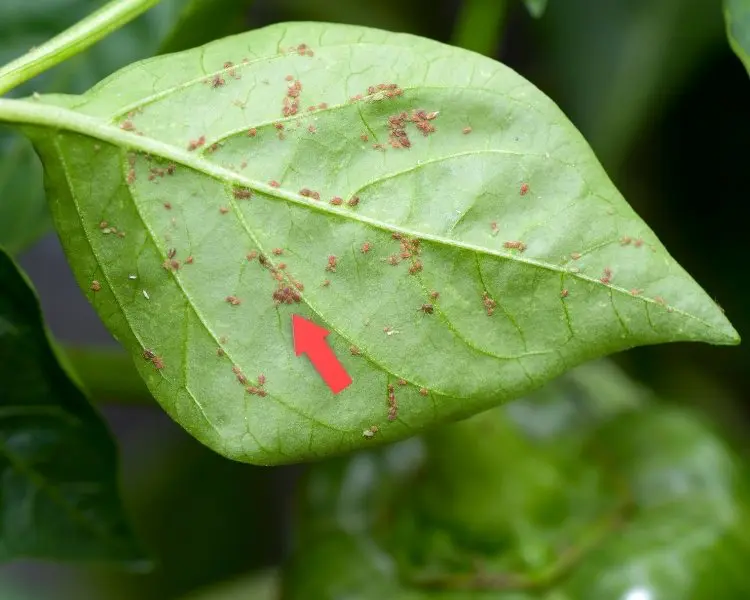
Aphids suck the sap out of the leaves, so while they are small, if the aphid population gets out of control they can devastate a plant and cause yellow, brown or even black leaves.
Check the underside of your mint leaves to see if you find an aphid population living there. They lay eggs under the leaves and most nymphs will live there.
How to Get Rid of Aphids
Getting rid of aphids can be a tedious task. They multiply so quickly that unless you catch them all, they will keep coming back.
Neem oil is often a great starting place as you can spray your entire plant and create a crappy environment that aphids won’t want to live in. You’ll need to reapply neem oil regularly, about every 1-2 weeks, but it is quite effective for aphids and other pests.
100% cold-pressed neem oil that can be used as a foliar spray for healthy garden plants. Free of water and other additives.
Can I Eat Mint Leaves That Are Black?
I wouldn’t eat leaves from your mint plant if the leaves are turning black. Since this is often caused by fungal diseases or extreme pest damage, it’s best to avoid these leaves and use healthy mint leaves instead.



